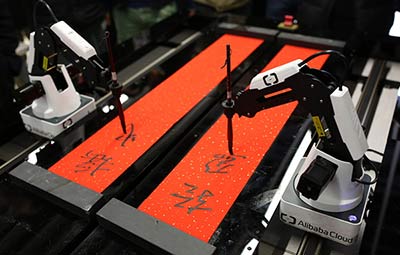Jilin group sets goal of putting 60 satellites in orbit by 2020
A private company in Jilin province-Chang Guang Satellite Technology Co-aims to launch 60 satellites into orbit by 2020. This is part of the province's push to renovate its manufacturing industry and transform itself into an aerospace technology hub.
The ambitious plan follows the northeastern province building the country's first domestically developed commercial Earth imaging satellite in 2015. The satellite was developed by Chang Guang, a commercial spinoff of the Chinese Academy of Sciences' Changchun Institute of Optics, Fine Mechanics and Physics.
In January 2017, a new commercial satellite developed by the company was launched to help monitor the province's sprawling forests, partly to prevent fires. This brought the number of satellites manufactured and launched by the company to five.
"We want to have 60 satellites operational by 2020, and 138 satellites in service by 2030, which will ultimately make it possible to offer a 10-minute revisit capability anywhere in the world," said Jia Hongguang, deputy general manager of Chang Guang.
According to the company, its technology prowess, once backed by private capital, can accelerate the civilian application of aerospace technology.
Currently, the Jilin-based company counts government agencies and the military as their core customers. But tapping into the consumer mass market will be the key to cultivating a booming commercial aerospace industry, said Wang Dong, assistant to the general manager at Chang Guang.
"We not only sell satellites, drones and their parts and systems, but also offer a whole set of solutions, which will give us an edge in appealing to the public," Wang said. He declined to disclose the cost and profit involved in making a satellite.
Miao Qianjun, secretary-general of the Global Navigation Satellite System and Location-based Services Association of China, said that small and medium-sized satellites are enough to support civilian applications. This is unlike the United States' GPS navigation system and China's BeiDou satellite system, which demand big satellites, he said.
"Small satellites cost far less and can be of more practical use for a limited area. They have big commercial potential," Miao said.
Last year, the Jilin provincial government, Changchun municipal government and Chang Guang set aside 500 million yuan ($72.8 million) to set up an investment fund to cultivate young engineers and developers who are passionate about the aerospace industry.























